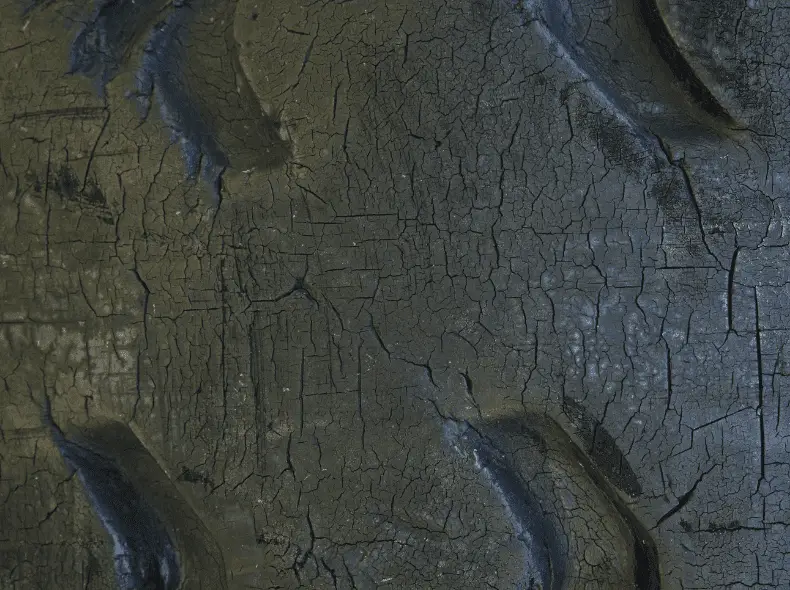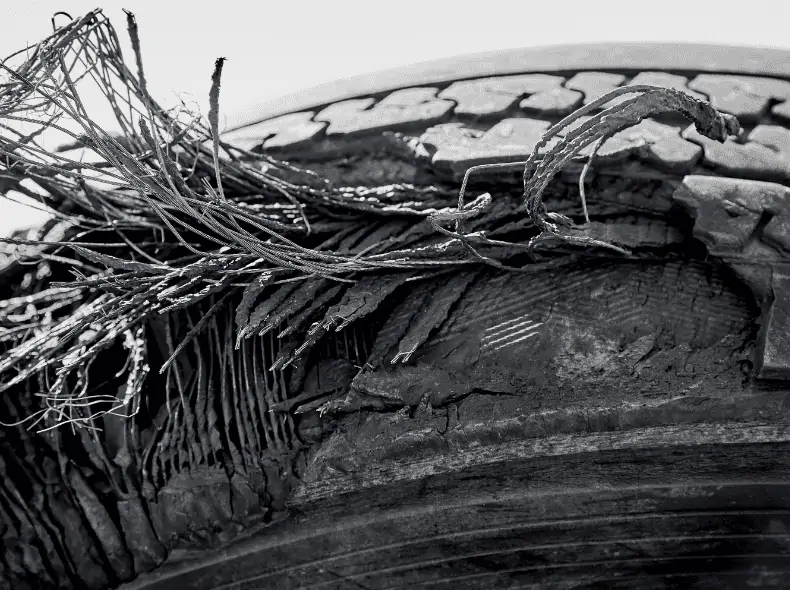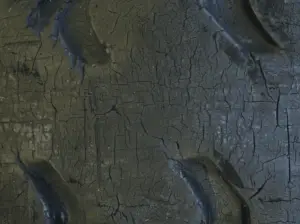The short answer: it is not safe to drive on cracked tires. The slightly longer answer: depends on the size of the cracks and where they’re at.
In this article, we will look at whether it is unsafe to drive on cracked, including weather-cracked tires, and discuss the best course of action to take when you face this situation.
Never drive on a tire with a large number of cracks or even one deep crack
If you see small cracks in the tread, it’s likely that your tire is still safe to use.
Deep cracks can indicate that the tire is close to failing, so you should take steps to replace it as soon as possible. There is no repair for tires that have deep cracks in them.
You can’t really tell if a tire is safe to drive with just by looking at it, but you can tell sure if it’s not safe to drive on.
Look for this
Look for a large number of cracks in the tread, deep cracks that start at the bead area and spread out from where they started, cracks that cross over the tread, and cracks that are close to one another.
If you see any of these signs, get your tire checked out by a tire shop before driving on it again. You are likely to need a new tire, though.
If the tires have shallow – perhaps even paving-like cracks but otherwise structurally intact, are they safe to drive with? Yes, as long as the cracks are not very deep or very close together. This could well be weathering cracks which usually aren’t as dangerous.
Hairline cracks along the sidewall are often just a sign that the tire is getting older. The rubber is drying out and cracking, but the tire is still safe.
Cracked tires are more prone to sharp stone and gravel punctures.
Cracks are weak spots in the tire. If you hit something sharp, like a piece of gravel or a small stone, it can penetrate the tire more easily.
A tire with no cracks is more likely to withstand punctures from those. So expect more punctures with deep cracks.
Are Weather Cracked Tires Safe?
A combination of factors causes weather cracks in tires. The primary cause is exposure to ozone and ultraviolet light, which breaks down the rubber in the tire and causes it to crack and age.
Weathered tires also loses in deep black color when this happens on take on a dark gray hue.
This can also happen when the tire has been exposed to temperatures below freezing for extended periods as well.
Cracks are a common problem with tires and are often caused by the same thing: age. Tires slowly deteriorate over time, and weather cracks are one of the effects of this process.

If you have weather cracks on your tires, you’re probably concerned about whether or not they’re safe to drive on. The answer is yes—weather cracks on tires don’t necessarily mean that your tires are in bad shape.
As long as the cracks are small and not too deep, they won’t affect your ability to drive safely. However, if you notice large cracks or holes in your tires, it’s time to replace them.
Tire Cracks and Separation?
Tire cracks and tire separation are two different things, though they can sometimes look similar.
Tire separation occurs when the tread separates from the sidewall and can result from bad deep cracks close to the sidewall but still on the tread area being driven on.
Tire separation is more dangerous than a cracked tire because it can cause your tire to fail suddenly and blow off the wheel.

Tire separation can occur for several reasons and not just deep tire cracks, including underinflation and over-loading. Tire separation can be dangerous because it can lead to loss of control or even a blowout (where the tire bursts).
Will Tire Cracks Pass State Inspections?
Many states require vehicle inspections, and some have more strict requirements than others. Some states only require the inspection after the car reaches seven years of age, while others require it annually or every other year.
In most cases, the inspection will include a tire check. If you have weather cracks in your tires, they normally pass the inspection, but any deep structural cracks will require you to replace the affected tire.
In most states, vehicles with tires that fail the inspection aren’t allowed back on the road until the tire is replaced.
Some states don’t require tire inspections at all. The ones that do tend to use visual inspections and will look for other damage, like bulges, and uneven wear, to help them decide whether the tire needs replacing.
Here is a list of the states that require inspections and the intervals. State Car Tire Inspection Rules
Conclusion
It is never advisable to drive on any tires that have deep or numerous cracks on them. Always err on the side of caution and get the tire inspected at a tire shop or replace it.
Weather-cracked tires are normally extremely shallow and caused by the sun’s interaction with the rubber and normally start to show after the tire reaches six years or older.
The tire may also lose its color around the same time weather cracking occurs.
Many tire manufacturers state that after six years of being on a car, irrespective of the mileage done, the tire has reached the end of its useful life and should be replaced at this time.
Cracked – not weather cracked – tires due to overloading the wrong air pressure, being badly stored, or been in contact with harsh chemicals usually have a different appearance from the shallow paving style cracking that you’ll often see with weathered tires.



![Will A Cracked Rim Leak Air? [NOT ALWAYS] Tire-blowout](https://carzaza.com/wp-content/uploads/2023/12/Tire-blowout-300x224.png)

![Cracks In Car Tires – What Causes Them? [ANSWERED] Bad-cracks-in-tire](https://carzaza.com/wp-content/uploads/2023/12/Bad-cracks-in-tire-300x224.png)







